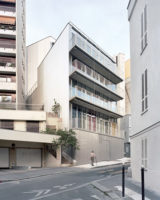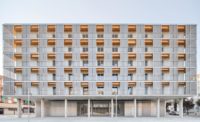Oaxaca, Mexico
For an up-and-coming architect, Derek Dellekamp is in an enviable position, by many measures. Based in Mexico City, he has been recognized internationally for his work and wins commissions for trendy bars, high-end apartments, and luxury hotel extensions. But Dellekamp continues to explore new directions for the practice he founded in 1999. Looking for deeper meaning in his work, he has increasingly focused on the shortage of quality affordable housing across the country. “The speed at which big developers build in Mexico is frightening,” he says, likening the phenomenon to a factory that churns out buildings “one after the other.”
His most ambitious design, a 1,200-unit social-housing complex just outside the town of Tlacolula in the state of Oaxaca, has drawn attention and accolades for its sensitivity to the local climate and culture. Despite the buzz, the project has been stalled for over two years because of zoning issues, but it may soon have a second life. This winter, for the first time, the local government gave the project its OK to proceed once a wastewater-treatment program is in place.
Dellekamp's scheme involves a series of building blocks, or housing units, that can be rotated, stacked, or broken apart across the 27-acre site. Each 409-square-foot block contains a living room, kitchen, dining area, bedroom, bathroom, and storage. Families can combine the basic units as needed, with the option to add a second floor, extra bedrooms, or more square footage for a store or business. There is ample space for outdoor courtyards, and residents move from room to room via sheltered exterior corridors–a feature common to this temperate region, where much living takes place out of doors. To create ideal interior climate conditions, the architects used a computer program to adjust ceiling height, window and door sizing, and placement for optimal cross'ventilation and heat retention.
In 2010, Dellekamp finished two brightly colored concrete prototypes on a neighboring 7-acre site, where he plans to build 90 slightly larger houses for working-class families. Each prototype sits on a relatively spacious 2,150-square-foot plot, and the smaller of the two, at 830 square feet, has a construction cost of about -37,000.
Today the prototypes function as model homes. As is so often the case with these sorts of speculative projects, not just smart designs are needed but also a tenacious champion and a bit of luck. With construction slated to restart later this year, Dellekamp is guardedly optimistic. “It's a battle that's been going on for years,” he says. “But I do think we have found a subtle way to make a big difference.”
People
Heading - simply apply bold:
Sub-heading - apply ital: |
Products
Heading - simply apply bold:
Sub-heading - apply ital: |






Post a comment to this article
Report Abusive Comment